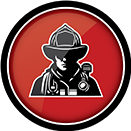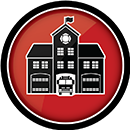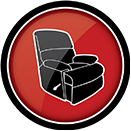Designing Fire Stations That Actually Support Firefighters
A fire station isn’t just a workplace. It’s not just a building that houses fire trucks and equipment.
It’s a firefighter’s home away from home. So why do so many fire stations still feel like they're designed around equipment instead of people?
That’s starting to change—and the shift is long overdue.
Firefighters face a unique cocktail of stress: physical strain, emotional pressure, chemical exposure, interrupted sleep, and long hours in close quarters.
You can’t design that away.
But you can build a space that helps them recover from it. And that starts with the station itself.
Let’s Talk Design
Contamination control isn't just about procedures—it's about smart design choices.
Modern stations prioritize firefighter health through thoughtful material selection and ventilation systems. Proper air flow and surface materials can significantly reduce exposure to harmful contaminants.
The right materials matter everywhere. Easy-to-clean surfaces where needed. Comfortable, inviting materials in living spaces—provided they're built for heavy use.(And not the kind of "tough" that breaks down after a year of 24/7 shifts.)
Sleep Isn't a Luxury
It's a strategy.
You can't predict when the next alarm will go off. But between calls, quality rest can make or break a firefighter’s ability to respond.
That’s why private bunk rooms are catching on across the country. No more rows of beds in a loud, fluorescent-lit warehouse.
Quiet. Personal. Controlled.
And the furniture matters just as much as the floor plan. Mattresses need to be supportive, comfortable, and durable enough to handle real-life firehouse wear and tear. (Pro tip: skip the “residential” grade stuff—it won’t last a year.)
Some firefighters still have to rest in shared spaces. So what then?
That’s where layout meets empathy.
Partitions, staggered shifts, blackout curtains—small details with a big impact. Comfort becomes part of readiness. Not the opposite.
Dayrooms Done Right
A recliner isn’t just a recliner in a fire station.
It’s where you land after a tough call. Where you put on the game and try to pretend—for an hour or two—that your body isn’t running on fumes.
That chair better hold up. It should be:
- Comfortable
- Supportive
- Cleanable without feeling like plastic
- Tough enough for 24/7 use
But maybe more than anything, it should feel like it belongs to heroes who need a moment's peace. Because firefighters need that from time to time.
The Mental Health Layer
Design can’t solve trauma. But it can make space for healing.
Natural light. Quiet corners. Spaces that allow people to step away—without stepping out.
Too many stations treat mental health support like a policy checkbox. But culture lives in space. If the only place to decompress is the bay, what are you really saying about stress?
Private offices. Calm spaces. Real places to breathe. Those aren’t luxuries—they’re lifelines.
Fitness That Feels Like the Job
Forget the treadmill in the storage room.
Functional fitness means ropes, sleds, sandbags, movement. It means a space designed to train the way firefighters actually work.
Open floor space. Strong flooring. Decent air flow. A spot to stretch before the shift and decompress afterward.
And not for nothing—training together strengthens the crew. It’s culture-building, not just muscle-building.
No station has an unlimited budget.
But the best ones don’t start with what’s cheapest—they start with what matters.
If your station needs a reset, don’t start with the blueprints. Start with the people inside them. Then build from there.
Even small changes can make a big difference.
We’d love to help.
Whether you're outfitting a new station or upgrading the one you’ve got, our team can guide you through the right choices for your crew.
Contact us to get started—no pressure, just a real conversation about what your firefighters need.



